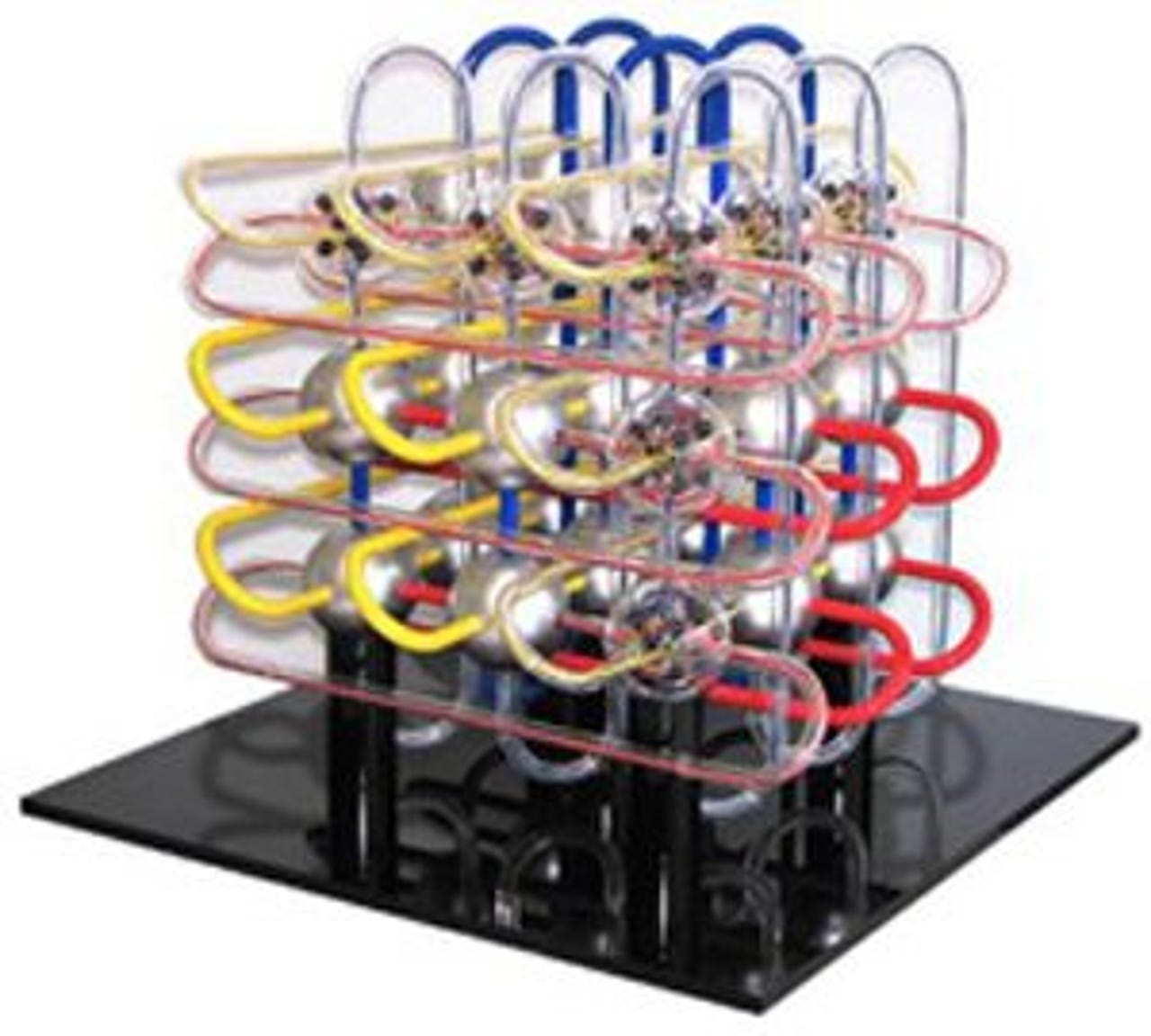Inside the world's top supercomputer: pics

(Credit: Riken)
The K Computer, which is housed at the Riken Advanced Institute for Computational Science in Kobe, has 672 computer racks and 68,544 CPUs. This system achieved a LINPACK benchmark performance of 8.162 petaflops (quadrillion floating-point operations per second).
But this supercomputer isn't even finished. That should happen in November 2012 when it is expected to house more than 800 computer racks and exceed 10 petaflops.
(Credit: Riken)
The K Computer's performance of 8.162 petaflops was more than three times higher than the second-place and former title-holder, the National Supercomputing Center in Tianjin China, which maxed out at 2.566 petaflops.
(Credit: Riken)
Here's a look a a typical rack in the K Computer.
(Credit: Riken)
The pieces of the K Computer.
(Credit: Riken)
The K Computer uses a "SPARC64 VIIIfx" CPU designed and developed by Fujitsu using 45-nanometre process technology. The chips (80,000 of them) are expected to be housed in the completed project, which is expected to top the 10 petaflop barrier.
(Credit: Riken)
Six I/O system boards are installed in each rack. Each board contains 4 SPARC64 VIIIfx CPUs with eight cores integrated into each chip. The board delivers a performance to power ratio of 2.2 gigaflops per watt.
(Credit: Riken)
Here's a look at the pieces of the water cooling system for the K Computer.

(Credit: Riken)
The six-dimensional mesh/torus topography is described by Fujitsu:
"The design of the six-dimensional mesh/torus topology in the K Computer means there are many communication routes between neighbouring CPUs. This enables the execution of data communications between CPUs via the shortest route and over the shortest period of time and ensures the network can fully draw out this world top-class CPU computational power."
(Credit: National Supercomputing Center, Tianjin)
Here is China's top supercomputer, which was built in 2010 and is located at the National Supercomputing Center in Tianjin. China placed second to the US, with 62 supercomputers on the Top 500 list.
(Credit: Riken)
What can you do with a supercomputer? This graphic shows five areas where the K Computer is expected to toil.
Via ZDNet US